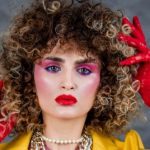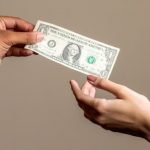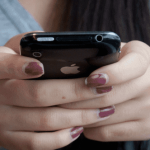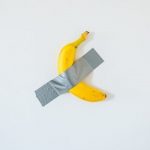 Food
Food  Food
Food  History
History 10 Odd Things Colonial Americans Kept at Home
 Weird Stuff
Weird Stuff 10 Superstitious Beliefs That Once Consumed Entire Cultures
 History
History 10 Bizarre Friendly Fire Incidents in Military History
 Technology
Technology 10 Modern Technologies That Accidentally Imitate Ancient Magic
 Mysteries
Mysteries 10 Mysteries of the Human Genome
 Weird Stuff
Weird Stuff 10 Things So Rare They’ve Only Been Found Once
 History
History 10 Legends Whose Last Moments Undid Their Glory
 Health
Health 10 Futuristic Ideas to Treat Common Medical Problems
 Weird Stuff
Weird Stuff Ten Surreal Attempts to Reverse Baldness
 Food
Food 10 Everyday Foods You Didn’t Know Were Invented by the U.S. Military
 History
History 10 Odd Things Colonial Americans Kept at Home
 Weird Stuff
Weird Stuff 10 Superstitious Beliefs That Once Consumed Entire Cultures
Who's Behind Listverse?

Jamie Frater
Head Editor
Jamie founded Listverse due to an insatiable desire to share fascinating, obscure, and bizarre facts. He has been a guest speaker on numerous national radio and television stations and is a five time published author.
More About Us History
History 10 Bizarre Friendly Fire Incidents in Military History
 Technology
Technology 10 Modern Technologies That Accidentally Imitate Ancient Magic
 Mysteries
Mysteries 10 Mysteries of the Human Genome
 Weird Stuff
Weird Stuff 10 Things So Rare They’ve Only Been Found Once
 History
History 10 Legends Whose Last Moments Undid Their Glory
 Health
Health 10 Futuristic Ideas to Treat Common Medical Problems
 Weird Stuff
Weird Stuff Ten Surreal Attempts to Reverse Baldness
10 Fashion Trends That Were Ruined by One Person
It’s not always easy to stay on top of the newest trends. Whether it’s an exclusive pop-up shop or just raiding thrift stores, everyone wants to have the latest looks and express themselves. Some fashion choices have been spoiled by a single person or event, while others became taboo due to political associations.
Here are 10 fashion trends ruined by one person or event.
Related: Top 10 Dangerous Fashion Choices for Women
10 Hats
Would you believe the first American president to not wear a hat at his inauguration came as late as 1961?
Well, believe it. John F. Kennedy sported a bare head that morning, almost instantly plummeting the popularity of fedora and dress hats. JFK was, and still is, one of the most popular and “cool” presidents in American history. So, if the good-looking leader of the country didn’t wear a hat, neither did anyone else.
According to the JFK Library, the president received letters from scores of hat makers begging him to wear one just so they would become popular again. While he was known to occasionally wear one, it seems Kennedy simply didn’t like having his head covered, as throughout his time in office, he was rarely seen with a hat, even that most American of headwear—the cowboy hat.[1]
9 Black Satin
In 1849, Marie Manning and her husband George were arrested in London for the murder of Marie’s former lover. The ensuing trial was extremely high profile, with both Charles Dickens and Herman Melville present for the couple’s hanging that same year. Dickens would even go on to base a character on her in his novel Bleak House.
While London society was taken with the killer couple, the women of good stature apparently took no chances in being associated with a murderess. For her execution, Marie Manning wore a black satin dress, which, according to the Dictionary of National Biography, “caused that material to become unpopular for many years.” The premier history book about the case is even toiled The Woman Who Murdered Black Satin.[2]
8 Bruno Magli Shoes
According to a survey by Nielson and Sony, the O.J. Simpson case has been declared the most “universally impactful” televised event of the last 50 years. In a pop culture event with that much clout, it should be no surprise that some fashion choices were influenced by it. Though, surprisingly, not gloves.
When Nicole Brown Simpson and Ron Goldman were found dead, it was immediately assumed that Brown’s husband Orenthal James “O.J.” had done it. A harrowing trial ensued, one where Americans around the country continually tuned in to find out if O.J. would be found guilty or not.
The primary piece of evidence left behind at the scene of the crime was a size 12 shoe print stamped in blood from a Bruno Magli “Lorenzo model” shoe. At the time, only 299 pairs of the exclusive Italian designer’s shoes had been sold in the United States—and O.J. was a size 12.
The previously obscure brand had been catapulted into the spotlight, but not in a positive way. After all, being the shoes of a (probable) murderer wasn’t exactly good press. It didn’t help that when asked if he had ever purchased a pair of Bruno Magli shoes, O.J. replied that he thought they were ugly and would never have bought them.[3]
7 Pointed Hoods
To be fair, it’s not like pointed hoods were ever the season’s hottest new look. But when the Ku Klux Klan adopted white pointed hoods as part of their uniforms, it became pretty much impossible to wear them without the association of extreme racism.
The KKK was created during the American Civil War but experienced a revival in the 1920s. This extremist hate group is known for committing acts of violence against Black people, Jews, and Catholics, all while wearing white robes with pointed white hats.
The origin of the pointed hood is unknown, though some think it may have come from the Spanish capirote, while others believe it is derived from old Southern Mardi Gras celebration outfits. It’s also unknown who exactly was the designer of the KKK’s uniforms, but whoever did it almost single-handled ruined anything similar.
As the Anti-Defamation League’s website notes, “the hood and robes of Ku Klux Klan members are the most visible Klan symbol of all,” and the image of the KKK hood has become a popular hate symbol in and of itself.[4]
6 Bob Naircut
The name “Karen” has plummeted in popularity thanks to the Gen Z slang term, which refers to a “Karen” as an entitled upper-middle-class (usually white) woman. From jokes about “speaking to the manager” to being racist, “Okay, Karen” has become a biting insult from a young person.
Besides being unfortunate for all people actually named Karen, there’s one more demographic that is hit hard by this joke: Women with bobs. The choppy bob haircut, particularly with blond highlights, has been referred to as the “can-I-speak-to-the-manager haircut” and the “Karen haircut.”
It all started with Kate Gosselin, the star of the reality TV show John & Kate + 8, who sported an iconic bob with extreme length differences in the front and back. As she became known as an entitled and demanding woman, her hair started to become the stereotype for the “Karen.”[5]
5 Tesla
Besides just being a mode of transportation, a car is a way to express yourself and (sometimes) show off your dough. So, for all intents and purposes, it’s a form of fashion and will be included on this list.
No car has made more of a splash in recent years than Tesla, the electric car brand that has been sweeping the world since 2008. Though they’re better for the environment than the average gas-powered car, many refuse to purchase one because of opposition to the company’s CEO, Elon Musk.
Musk is a controversial figure for many reasons, not least of which include purchasing and renaming Twitter, as well as supporting hate speech on social media. Because of this, driving a Tesla may mean that its owners are assumed to support Musk and his antics.[6]
4 Skinheads
The term “skinhead” has an interesting history. It started as a 1960s movement in London primarily comprised of working-class youth rejecting conservative values. They were defined by their closely shaved heads and grunge clothing, emphasizing a punk look. This version of “skinheads” reached its peak in the 1980s, when political tensions were at an all-time high in Britain. As a result, the culture split in two, with some skinheads aligning themselves with far-right groups such as the National Front while others went in the opposite direction.
By the 1990s, the skinhead fashion became popular in America among neo-Nazis. Despite efforts from groups such as Skinheads Against Racial Prejudice (SHARP) to assure others not all skinheads were Nazis, the term (and fashion associated with it) has unfortunately been tainted by the association with white power and racism.[7]
3 Red Hats
Perhaps the most controversial U.S. president in history, Donald Trump’s followers are noted for their bright red baseball caps that read “Make America Great Again.” For many, wearing them is a way to proudly show support for the 45th (and 47th) leader of the free world.
But for others, the hats are annoying or even hateful. A New York Times article titled “Does This Red Cap Make Me Look MAGA?” followed a Cincinnati Reds fan who no longer felt comfortable wearing his favorite team’s red hat, as he didn’t want “someone assuming I’m something that I’m not, or that I represent something that I think has become pretty ugly.” The article also reported that many Americans stopped wearing and purchasing red caps for fear of being mistaken for a Trump supporter.
One Trump supporter confessed that even though he voted for Trump, he had to stop wearing his MAGA hat because of the negative responses, as “it always gets a look and a sneer.”
When Trump is out of office in 2029, the red hat may become just a red hat once again, but until then, it carries some political weight that is hard to ignore.[8]
2 Trench Coats
American schools changed forever in 1999 after two twelfth graders in Columbine, Colorado, killed fourteen students and one teacher. “Columbine” became synonymous with “school shootings,” and so did one unlikely object of clothing—the trench coat.
Both Eric Harris and Dylan Klebold wore black trench coats on that fateful day, as the long jackets and bulky nature allowed them to conceal their bombs and guns. They were also known to wear trench coats frequently at school and were even thought to be part of a school clique known as the “Trench Coat Mafia.” This group proudly wore different clothing in an effort to separate themselves from the “jocks” and popular kids that bullied them.
After Columbine, trench coats became a suspicious piece of clothing, with many American schools going so far as to ban them. In 1999, CNN reported that parents around the country were lobbying to ban trench coats and all-black clothing in schools, as they considered these to be “gang related.” There was also concern that Klebold and Harris had been bullied partially because of their odd sense of style, which contributed to the reasoning for their violent act.[9]
1 Toothbrush Mustache
Better known as the Hitler mustache, this short stache went out of fashion for an obvious reason.
Before the Fuhrer so rudely appropriated it, comedians like Charlie Chaplin and Oliver Hardy popularized the toothbrush mustache in the United States. Many men liked how easy it was to maintain compared to the older styles, such as handlebar and walrus mustaches, and the toothbrush mustache became known as the newer, sleeker style of facial hair in America.
The style grew in Germany throughout the early 1900s as Americans visited the country, overtaking the Kaiser mustache, which was longer and featured curled ends such as Wilhelm II sported. It’s likely that Adolf Hitler simply adopted the look because it was fashionable when he was a young man.
However, there is one other popular theory. Author Alexander Moritz Frey served in the same regiment as Hitler in World War I. He claimed Hitler shaved his mustache shorter so he could put on his gas mask without any interference. While there’s no proof that this is the case, Hitler was hospitalized due to a poison gas attack during the war.
By the 1940s, the toothbrush mustache was no longer the look of modern Americans or English silent film stars. It was the mustache of perhaps the most evil man in history. Though some have tried to disassociate the small square of hair with Hitler, his influence remains a key reason you probably won’t meet many men with this old style.[10]








